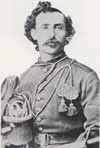History Mystery: What are the chances there were two men named Ernst Meineke, both born in Germany about 1845 and both baptized at the same church in Prussia ten months apart? Ernst Heinrich Friedrich Meineke was born on December 18, 1845, to Heinrich Friedrich Meineke and Sophie Charlotte Meineke and baptized on January 11, 1846. Ernst Friedrich Meineke was born on March 2, 1846, and baptized on March 9. His father was Georg Heinrich Barnstorf, and his mother was Dorothee Sophie Elisabeth Meineke. One of these boys likely served in the 7th Cavalry at the time of the Battle of the Little Bighorn (but was not present there). “Our” Ernst Meineke died at the Soldiers Home in Washington in 1907. If you have suggestions for how to decide which Ernst served in the 7th, please leave a comment or write to LBHA@cox.net.
Now for this week’s milestones . . . .
Richard Winick Corwine was born in Maysville, Mason County, Kentucky, on July 19, 1844. He was a Private in Company A who was not present at the Battle of the Little Bighorn due to detached service.
David Cooney died on July 20, 1876, at Fort Abraham Lincoln, Dakota Territory. He was originally buried in the Post Cemetery there and was later reinterred in the Custer National Cemetery on the Crow Agency in Montana. He was a Private in Company I who rode with the pack train and was wounded in his right hip during the hilltop fight.
William August Marshall was born in Germany on July 21, 1851. He was a Private in Company D who participated in the hilltop fight during the battle.
The Minneapolis Tribune reported on July 21, 1882, that “. . . Francis J. Kennedy and Mary E. Hogan . . . received legal permission yesterday to marry.” He was a Private with Company I who was with the pack train and in the hilltop fight.
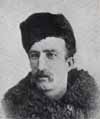
John A. Reed (left) died on July 21, 1897, at Fort Sisseton, South Dakota. He was originally buried in the Post Cemetery there and was later reinterred in the Custer National Cemetery on the Crow Agency in Montana. He was a Private in Company G who was in the valley and hilltop fights.
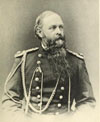
John Eaton Tourtellotte (right) died on July 22, 1891, in LaCrosse, Wisconsin. A cenotaph for him is at the Tourtellotte Cemetery in Thompson, Connecticut, but he was buried in Arlington National Cemetery in Arlington, Virginia. He was a Captain in Company G who was not present at the battle due to detached service.
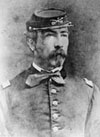
Owen Hale (left) was born on July 23, 1843, in Troy, New York. He was a Captain in Company K who was not present at the battle due to detached service.
Ernst Meineke died in Columbia Station, Virginia, on July 24, 1907, and was buried in the Soldiers’ Home National Cemetery in Washington, D.C. He was a Private in Company F who was not present due to detached service.
Richard A. Wallace drowned on July 25, 1876, near the mouth of the Bighorn River in Montana Territory while attempting to cross the river for picket duty. He was eventually interred in the mass grave on Last Stand Hill. He was a Private with Company B who was with the pack train and participated in the hilltop fight.
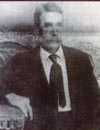
Thomas James Stowers (left) died in Baxter, Tennessee, on July 25, 1933, and was buried in the Odd Fellows Cemetery near Baxter. He was a Private with Company B who was with the pack train and participated in the hilltop fight.

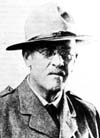
Theodore W. Goldin (right) was born on July 25, 1858, in Avon Township, Wisconsin. He was a Private with Company G who participated in the valley and hilltop fights. He was awarded the Medal of Honor for his heroic actions during the battle.

